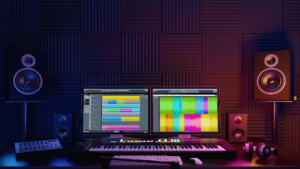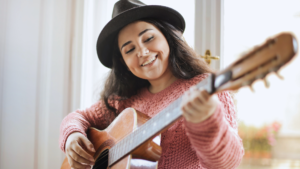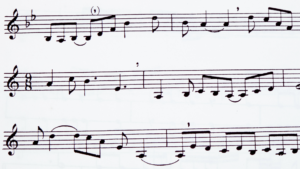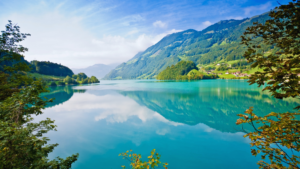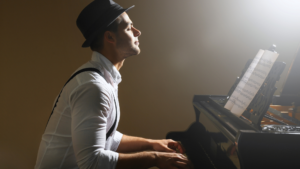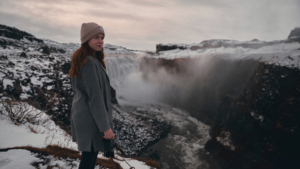
Music serves as a powerful catalyst for artistic expression, shaping the creative processes of countless artists. The influence of music can transform emotions, inspire new ideas, and ignite the imagination, leading to profound expressions in various art forms. Whether through painting, dance, or literature, artists frequently draw upon musical elements to enrich their works.
As artists engage with different genres and rhythms, they often infuse their creations with the feelings and narratives that music evokes. The synergy between music and visual art can result in compelling experiences that resonate with audiences on multiple levels. This relationship fosters a vibrant dialogue between the two mediums, encouraging experimentation and innovation.
Exploring the ways in which music inspires artistic expression reveals the depth of its impact on creativity. The interplay between sound and visual imagery opens up new avenues for artists, allowing them to convey messages and emotions in dynamic and unique ways. Whether through soundtracks to visual masterpieces or rhythmically inspired sculptures, the influence of music is evident throughout the art world.
Historical Perspectives on Music and Artistic Expression
The relationship between music and visual art has deep historical roots, reflecting cultural identities and innovations over time. Key movements, including Expressionism, reveal how music has shaped artistic expression and vice versa.
Early Influences and Evolution
Music’s influence on art can be traced back to the early 20th century. Composers like Arnold Schoenberg pioneered atonal compositions, pushing boundaries in both fields. His work encouraged visual artists like Wassily Kandinsky to explore new forms and colors inspired by musical concepts.
Kandinsky believed that colors and shapes could evoke feelings similar to those produced by music. This connection led to developments in abstract art. Artists began to create works that visually represented musical principles, shaping the evolution of modern art.
Iconic Artists and Their Musical Inspirations
Prominent artists such as Paul Klee drew inspiration from music, integrating rhythmic elements into their works. Klee’s paintings often illustrate musicality through composition and color. His art reflects the emotional depth found in music, contributing to the development of modern art movements.
Expressionism highlighted the emotional experience of both music and art. Musicians and painters aimed to engage the audience’s feelings. This mutual influence fostered a rich cultural dialogue, enriching both artistic fields and allowing them to explore themes of identity and experience.
Music’s Role in The Creative Process
Music is a powerful catalyst in the creative process, influencing both the emotional and intellectual aspects of artistic expression. It acts as a foundation for rhythm and harmony, fostering creativity. Additionally, music can inspire thoughts and emotions, driving individuals toward innovative ideas and self-expression.
Enhancing Creativity through Rhythm and Harmony
Rhythm and harmony in music can profoundly affect an artist’s ability to create. These elements promote a sense of structure, allowing artists to explore their ideas within a defined framework.
- Rhythm provides a beat that can inspire movement and flow in creative work, encouraging spontaneity.
- Harmony offers emotional richness, enabling artists to convey complex feelings in their art.
This interplay encourages experimentation, pushing boundaries and leading to inventive outcomes that reflect individual creativity.
The Psychology of Musical Inspiration
The relationship between music and inspiration is deeply rooted in psychology. Listening to music can trigger specific emotional responses that stimulate creativity.
Research shows that certain musical genres evoke different emotions:
- Classical music often fosters concentration and nuance.
- Jazz encourages improvisation and spontaneity.
These emotional shifts can lead to new perspectives and ideas, driving artists to explore uncharted territories in their work.
Cross-Disciplinary Influence on Artists
Music transcends artistic boundaries, influencing creators across various disciplines. Visual artists, writers, and performers often draw from musical elements to enhance their own work.
- Collaborations between musicians and artists often yield innovative projects that blend visual and auditory experiences.
- Artists may incorporate melodic structures into their work, imbuing it with a musical quality.
This exchange cultivates a richer artistic environment, fostering an interconnectedness that enhances overall creativity.
Cultural Movements and Artistic Expression
Cultural movements significantly influence artistic expression, shaping the ways artists interpret and represent their surroundings. Different music genres inspire varying trends in visual and performing arts, highlighting the interconnectedness of these disciplines.
Music Genres Shaping Artistic Trends
Jazz has had a profound impact on artistic expression since its emergence in the early 20th century. The spontaneity and improvisation in jazz music have encouraged similar techniques in visual art, leading to abstract expressionism. Artists like Jackson Pollock drew upon jazz’s rhythm to create dynamic artworks.
Classical music, with its structured compositions, has inspired artists to explore themes of harmony and balance in their work. Renowned composers, such as Beethoven, have coincided with various artistic movements, influencing painters like Caspar David Friedrich. Traditional genres like flamenco showcase the interplay of music and dance, directly affecting the visual arts through vibrant colors and themes of passion.
Folk Traditions and Contemporary Art
Traditional folk music serves as a rich cultural reservoir, often reflecting a community’s history and values. In contemporary art, these folk traditions provide inspiration for narrative-driven works. Artists incorporate folk music elements to tell stories that resonate with modern audiences.
For instance, the use of traditional rhythms and instruments can be observed in folk-inspired artworks. This incorporation helps preserve cultural identity while allowing for innovation in artistic expression. By bridging the gap between past and present, folk music influences artists to create works that are both timeless and contemporary.
Urban Sounds and Visual Expression
Urban music styles like hip-hop, reggae, and afrobeat significantly shape artistic expression in urban environments. Hip-hop culture, in particular, has evolved as a powerful force, influencing street art and graffiti. Artists often use visual mediums to comment on social issues, reflecting the themes present in their music.
Reggae’s message of social justice and liberation resonates through visual narratives found in murals and contemporary artworks. Afrobeat artists, like Fela Kuti, have inspired vibrant artistic representations that celebrate African identity and political consciousness. This fusion of urban sounds with visual expression fosters a unique dialogue between music and art, enriching cultural movements in cities worldwide.
Educational Implications and Future Directions
The relationship between music and artistic expression has significant educational implications. It affects how artistic skills are developed and highlights the integration of sound and visual arts within the educational context.
Music Education’s Influence on Artistic Skills
Music education plays a crucial role in enhancing artistic skills. Engaging with music cultivates emotional resonance that can heighten an artist’s motivation and creativity.
By understanding musical concepts, such as harmonies and rhythm, students can apply similar structures to visual arts. This cross-disciplinary approach fosters a unique multi-sensory experience, enriching the artistic process.
Courses that combine music and visual art encourage students to express feelings and concepts more deeply. Contemporary artists have demonstrated this link by blending musical elements into their visual designs, showcasing how education can facilitate innovative artistic methods.
The Interplay of Sound and Sight in Modern Education
Modern education increasingly recognizes the interplay of sound and sight. Integrating music with visual arts leads to enhanced art and design skills.
Institutions are adopting curricula that approach learning through multi-sensory techniques, engaging students more effectively. This method allows students to explore how music influences visual expressions, reinforcing their overall artistic development.
With advancements in technology, tools like digital soundscapes can enhance visual art projects. Moreover, collaborative projects among art and music students can lead to innovative outcomes, pushing the boundaries of traditional artistic expression.
Future directions in education can thus focus more on these interdisciplinary connections, shaping a generation of artists who draw inspiration from both music and visual arts.



